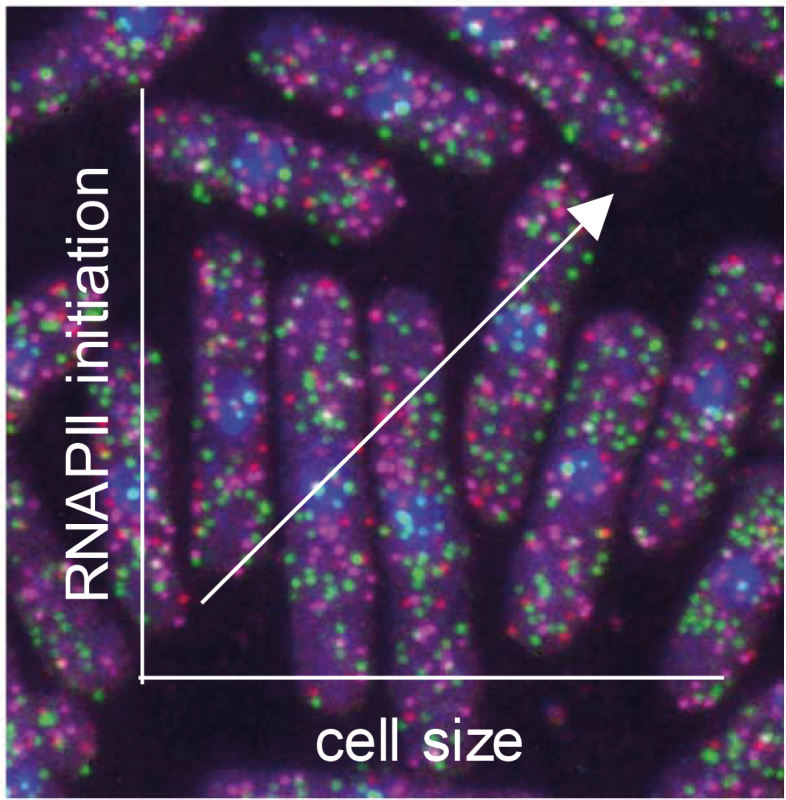By Sophie Arthur
February 18, 2020
Time to read: 3 minutes
There are over 37 trillion cells in our body – all with different shapes, but crucially all different sizes too. There are several proteins that are fundamental to the inner workings of the cell and so, naturally, a bigger cell will need a larger number of molecules to fulfil those crucial functions, whereas a smaller cell will need less. This is a phenomenon known as scaling. But given that each cell has the same set of genes regardless of size, how this set of genes produced different amounts of a given molecule was not well understood.
Research from the Quantitative Gene Expression group at the MRC LMS, in collaboration with the group of Vahid Shahrezaei (MRC LMS Mathematician in Residence and Department of Mathematics at Imperial College London), published in Current Biology on 13 February sheds some light on the mechanism behind scaling. They demonstrated how scaling works through the initiation of transcription – the process by which enzymes transcribe the code found in our DNA into messenger RNA (mRNA) ready to be used as a template to form proteins. The enzyme that transcribes these genetic instructions is called RNA polymerase II, and its total levels scale with cell size. As a result, the rate in which the polymerase comes onto the DNA changes with cell size too. Therefore, in bigger cells, more RNA polymerase II is found on the genome, and so more copies of mRNAs are produced to maintain levels. In a smaller cell, less polymerase enzymes limits the amount of the mRNA molecules produced.

These findings were then converted into a mathematical model to test whether it reproduces the same quantitative behaviour. The results backed up the observation that more RNA polymerase II was bound to the DNA in order for more copies of those genes to be converted into proteins found in larger cells. Interestingly, the mathematical modelling also suggested that some mRNAs can escape scaling, so one potential avenue for future work is to determine why a gene would not want to be influenced by this phenomenon.
The bigger picture
The process of scaling is a fundamental mechanism that underlies the ability of cells to become large, and as such can have implications for human health. It is clearly connected to development when our cells are dividing so rapidly and we are growing, and an inability to maintain levels of key proteins will affect a cell’s ability to do what it needs to do. Similarly, there can be complications when cells are able to become enlarged too.
Sam Marguerat, Head of the Quantitative Gene Expression group at the MRC LMS, discussed the next steps for this research:
“Another global property of cells is growth rate. Cells double their mass before dividing which scaling is responsible for. We have preliminary data that suggests transcription scales with growth rate, but this time the amount of RNA polymerase is not the limiting factor, so we want to explore this other scaling mechanism. Additionally, the rate at which a cell grows depends on nutrient availability and external conditions, which again scaling is connected to potentially through chromatin structure. We want to understand how the flux of metabolites influences chromatin structure and as such cell scaling as a result.”
‘Size-dependent increase in RNA Polymerase II initiation rates mediates gene expression scaling with cell size’ was published on 13 February in Current Biology. Read the full article here.